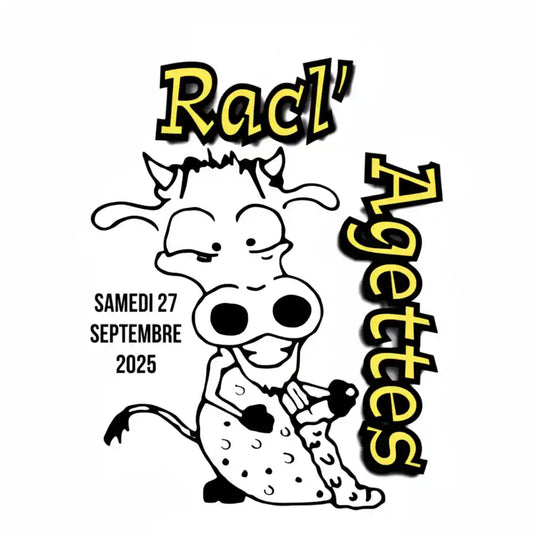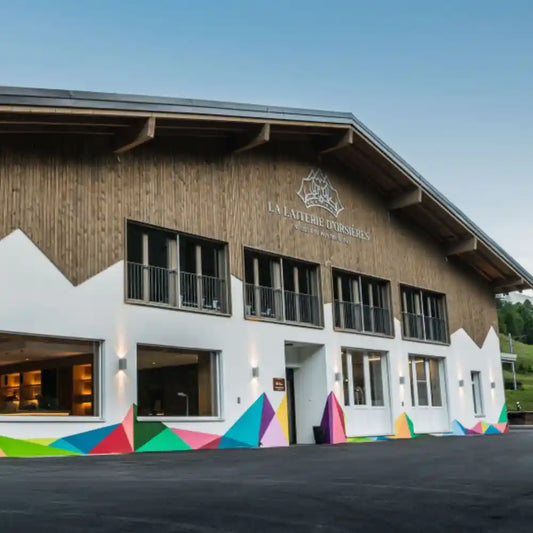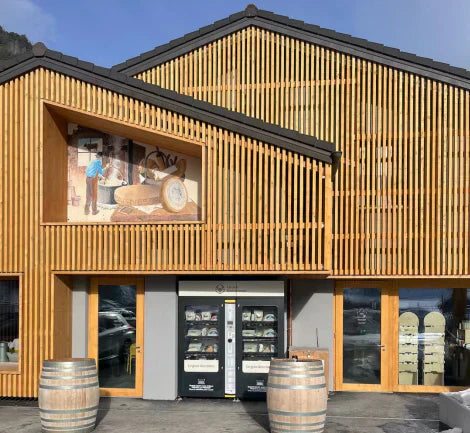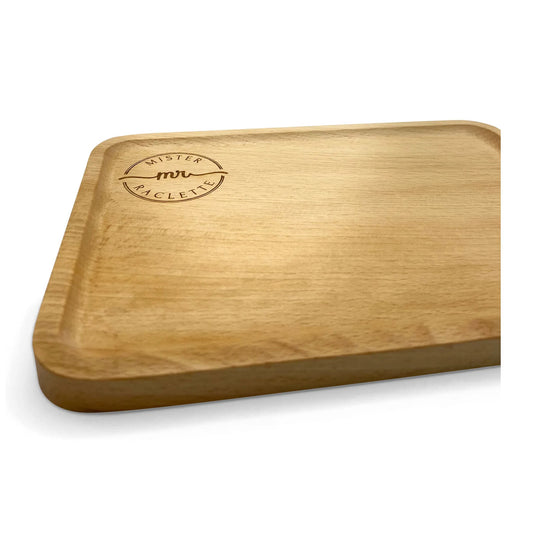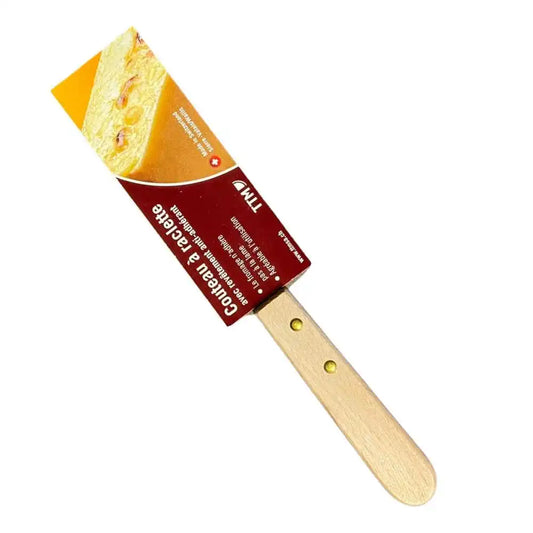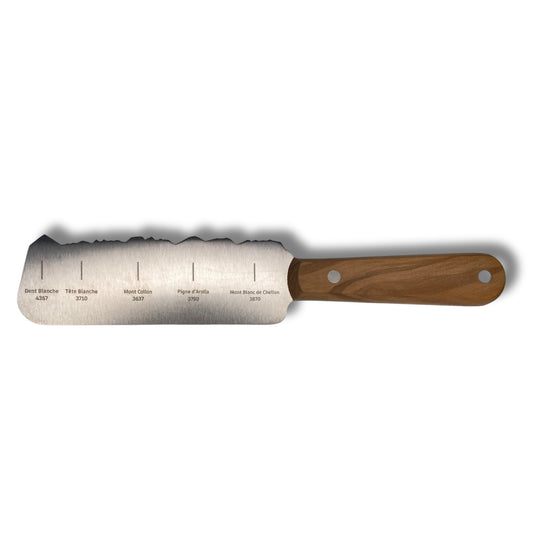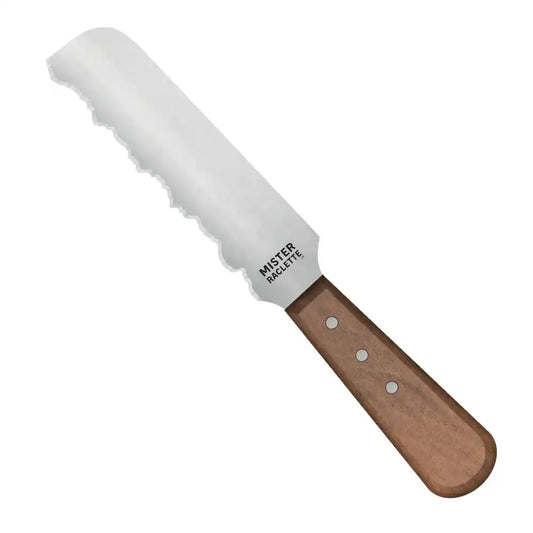Alpage cheeses VS dairy cheeses
Alpine cheese vs. dairy cheese
Raclette, that convivial, comforting dish, is a staple of Swiss and even Valais cuisine. It's appreciated not only for its simplicity, but also for the richness of its flavors. At the heart of this dish is alpine and dairy cheese, which, melted and runny, marries perfectly with potatoes, dried meat and gherkins. But not all cheeses are created equal when it comes to raclette. The choice of cheese can make all the difference between an ordinary raclette and an exceptional one.Among the many types of cheese available, two in particular stand out: alpine cheese and dairy cheese. Both types of cheese have their own characteristics and advantages, and the choice between one or the other can greatly influence the taste of your raclette. But which cheese is best for a raclette? It's a question that many raclette enthusiasts ask themselves.
In this article, we'll explore in detail the differences between alpine cheese and dairy cheese. We'll discuss their manufacturing process, their unique characteristics, and of course, their taste. Our goal is to help you understand these two types of cheese and make the best choice for your next raclette.
Whether you're a long-time raclette fan or just discovering this delicious dish, this article will provide you with valuable information. So get your raclette oven ready, sit back and dive in with us into the fascinating world of alpine and dairy cheese.
What is alpine raclette cheese?
Definition and production process of Alpine cheese
Alpine cheese is made from the raw milk of alpine cows, and is an uncooked pressed cheese. The production process begins with milking the cows, usually twice a day. The milk is then taken to the alpine cheese dairy, where it is transformed into cheese using traditional methods.First, the milk is heated and lactic ferments and rennet are added to curdle it. The curds are then cut, stirred and pressed to remove the whey. The cheese is then salted and left to mature for several months in a ripening cellar. This process develops the aromas and texture of Alpine cheese.
Unique characteristics of Alpine cheese
Alpine cheese is distinguished by its rich, complex taste, which varies according to the flora of the alpine pastures where the cows have grazed. It generally has a fruity, floral taste, with hints of hazelnut and caramel. Its texture is firm but melting, making it an excellent choice for raclette.The aroma of alpine cheese is also unique. It can vary from mild to strong, depending on the age of the cheese. Younger cheeses generally have a milder aroma, while older cheeses have a stronger, more complex aroma.
In conclusion, alpine cheese is a unique cheese, rich in flavor and aroma, bringing a touch of authenticity to your raclette. Its distinctive taste and texture make it a preferred choice for those seeking to discover the true flavor of Swiss raclette.
What is dairy raclette cheese?
Having explored the world of alpine cheese, let's now turn to dairy cheese. This equally popular type of cheese offers a different taste experience. And it has its own advantages when it comes to preparing raclette. But what really sets dairy cheese apart? And how is it made?Dairy cheese definition and production process
Dairy cheese is a cheese made from milk collected from several farms. It is then processed in a dairy. Unlike alpine cheese, which is produced directly on mountain pastures, dairy cheese is generally made in more modern facilities.Dairy cheese follows a similar process to that of alpine cheese. The milk is heated, lactic ferments and rennet are added to curdle the milk, then the curds are cut, stirred and pressed to remove the whey. After salting, the cheese matures in the cellar. However, industrial production of dairy cheese can further standardize the process.
Unique characteristics of dairy cheese
Dairy cheese is characterized by its uniform consistency and flavor. Due to the more controlled manufacturing process, dairy cheese generally has a smoother texture and a milder, less variable taste than alpine cheese. This can be an advantage for those who prefer a milder, more predictable cheese taste in their raclette.The aroma of dairy cheese can also be less pronounced than that of alpine cheese. This may be preferable for those who like a milder raclette. However, like alpine cheese, dairy cheese can vary according to the age of the cheese. with older cheeses having a stronger aroma.
In conclusion, dairy cheese offers a different taste experience to alpine cheese. Its smooth texture and mild taste make it an excellent choice for those who prefer a softer, more uniform raclette.
Comparison of alpine and dairy cheeses
We've explored the cheeses separately. Let's compare them in taste, texture, aroma and manufacture.Each cheese has its own characteristics. The choice influences the raclette. How do they compare in taste, texture, aroma and production?
Taste
Alpine cheese has a rich, complex taste, with fruity, floral, hazelnut and caramel notes. It has a distinctive taste that varies according to the flora of the alpine pastures where the cows have grazed. On the other hand, dairy cheese has a milder, more uniform taste, which may be preferred by those who like a milder, more predictable cheese taste in their raclette.Texture
Alpine cheese has a firm but melting texture, making it an excellent choice for raclette. Dairy cheese, on the other hand, has a smoother, more uniform texture, which may be preferred by those who like a softer, more uniform cheese texture.Aroma
The aroma of alpine cheese can vary from mild to strong, depending on the age of the cheese. Younger cheeses generally have a milder aroma. Older cheeses have a stronger, more complex aroma. The aroma of dairy cheese is generally less pronounced, which may be preferable for those who enjoy a milder raclette.Production process
The production process for alpine cheese is more traditional, and depends heavily on the flora of the alpine pastures and grazing. Dairy cheese, on the other hand, is generally made in larger, more modern facilities. This allows for a more standardized and controlled production process.In conclusion, the choice between alpine cheese and dairy cheese depends largely on your personal preferences. If you prefer a richer, more complex cheese taste, alpine cheese may be the best choice for you. If you prefer a milder, more uniform cheese taste, dairy cheese might be a better option.
Which is best for raclette?
Having compared alpine cheese and dairy cheese in terms of taste, texture, aroma and production process, the question arises: which of these two cheeses is best for a raclette? The answer to this question depends largely on your personal preferences, but there are also certain advantages and disadvantages to consider.Advantages and disadvantages of each type of cheese for a raclette
Alpine cheese, with its rich, complex taste and melting texture, brings a unique flavor to raclette. It is particularly appreciated by those who like slightly strong, distinctive flavors. However, its taste can vary according to the flora of the alpine pastures, which can make the taste of your raclette less predictable.Dairy cheese, on the other hand, has a milder, more uniform taste. This may be preferred by those who like a milder, more predictable cheese taste. Its smoother texture may also be preferred by some. However, it may lack the complexity of flavor found in alpine cheese.
Personal preferences and factors to consider
When choosing the cheese for your raclette, it's important to take your personal preferences into account. If you prefer a richer, more complex cheese taste, alpine cheese may be the best choice for you. If you prefer a milder, more uniform cheese taste, dairy cheese might be a better option.It's also important to take your guests' preferences into account. Especially if you're preparing a raclette for a group. Some people may prefer the rich, complex taste of alpine cheese. While others may prefer the milder, more uniform taste of dairy cheese.
In conclusion, choosing the "best" cheese for a raclette depends on your personal preferences. Whether you choose alpine or dairy cheese, the important thing is to enjoy the delicious experience.
Conclusion
Over the course of this article, we've explored in detail the differences between alpine cheese and dairy cheese. We've discussed their production processes, their unique characteristics in terms of taste, texture and aroma. And we compared their advantages and disadvantages for a raclette.We discovered that alpine cheese offers a unique taste experience. Dairy cheese, on the other hand, has a smoother texture. It may be preferred by those who like a milder, more predictable cheese taste.
However, choosing the "best" cheese for a raclette depends largely on your personal preferences. Whether you prefer the rich, complex taste of alpine cheese or the milder, more uniform taste of dairy cheese, the important thing is to enjoy the delicious raclette experience.
We encourage you to try both types of cheese. Each type of cheese has its own advantages and disadvantages. So why not try both and see which you prefer.
We'd love to hear about your experience
We'd love to hear about your experiences with alpine and dairy cheeses. Which type of cheese do you prefer for your raclette? Do you prefer the rich, complex taste of alpine cheese. Or do you prefer the milder, more uniform taste of dairy cheese? Share your experiences and preferences in the comments below.And don't forget, if you're looking for quality cheeses for your next raclette. Visit our website www.misterraclette.ch to discover our selection of cheeses. We're sure you'll find the perfect cheese for your next raclette.

